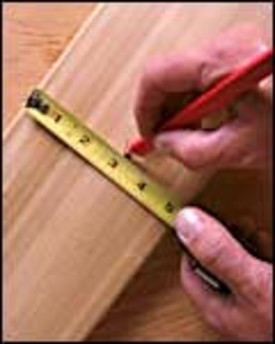In the last several years, a growing body of scientific evidence has indicated that the pollutant levels within homes can sometimes be higher than in outdoor air, even in large, industrialized cities. Other research indicates that people spend approximately 90 percent of their time indoors. The potential health effects from indoor air pollution vary greatly and range from allergies and asthma, to cancer and even death.
Indoor pollution sources that release gases or particles into the air are the primary cause of indoor air quality problems in homes. Inadequate ventilation can increase indoor pollutant levels by not bringing in enough outdoor air to dilute emissions from indoor sources and by not carrying indoor air pollutants out of the home. High temperature and humidity levels can also increase concentrations of some pollutants.
There are many potential sources of indoor air pollution in any home. These include combustion sources such as oil, gas, kerosene, coal, wood, and tobacco products; building materials and furnishings such as insulation, carpet, and cabinetry or furniture made of certain pressed wood products; products for household cleaning and maintenance, personal care, or hobbies; central heating and cooling systems and humidification devices; and outdoor sources such as radon, pesticides, and outdoor air pollution. The importance of any source depends on how much of a given pollutant it emits and how hazardous those emissions are, as well as the sensitivity of the population.
One component of maintaining good indoor air quality is the elimination, reduction, or management of the pollutant sources. Another important component is effective ventilation.
If too little outdoor air enters a home, pollutants can accumulate to levels that can pose health and comfort problems. In the past, homes had a significant amount of "natural" ventilation from leaks in the building. However, because some weather conditions can drastically reduce the amount of outdoor air that enters a home, pollutants can build up even in homes that are normally considered "leaky." Moreover, uncontrolled leaks can introduce moisture and humidity, pollens, and dust inside framing systems and interior spaces. This can lead to future air quality and durability problems. Beyond indoor air quality problems, leaky homes can be very expensive to heat and cool.
Building leaky homes isn’t the answer. Tight energy-efficient homes save energy and money. And with proper mechanical ventilation, they can have better indoor air quality than a leaky home. The reason is control. In a leaky home, outdoor air enters the house—through cracks, unsealed joints, and penetrations, for example—intermittently, depending largely on the weather. Some times there will be too much leakage, resulting in a drafty, uncomfortable house. Other times there won’t be enough, resulting in a stuffy house. Mechanical ventilation in a well-insulated, well-sealed house, however, can exhaust pollutants and bring in outdoor air in a planned way. This makes a house both comfortable and energy efficient.
While it may be difficult or prohibitively expensive to make some of the improvements described below with an existing home, building these features into an addition can be easy and inexpensive. You might even save money! And construction practices that promote good indoor air quality also help protect the house itself. For example, controlling moisture will reduce mildew odors, premature paint failure, rot, and structural damage.
The construction criteria mentioned below help to ensure good indoor air quality. For more information on how to best meet these criteria, check the resources list at the bottom of this page, especially No Regrets Remodeling and the EEBA Builder’s Guides.
- Use energy efficient construction. Building tight, well-insulated homes reduces heating and cooling costs. When combined with mechanical ventilation and pollutant source control, tight, energy- efficient homes are comfortable, economical, and promote good health. Indoor air quality and energy efficiency walk hand-in-hand.
- Control water and moisture.Controlling moisture in a home can help reduce mold, mildew, and other biological growth which are linked to a variety of health effects. Methods to control moisture include building an energy-efficient home with proper air-sealing, proper use of vapor barriers and vapor diffusion strategies. The entire building envelope, from the foundation to the roof, should be designed to not only prevent moisture entry, but also to allow any moisture which does enter a means to escape. Proper ventilation can help ensure that indoor humidity levels remain at acceptable levels.
- Eliminate, reduce, or control pollutant sources. Eliminating or controlling individual sources of pollution are important steps in providing good indoor air quality. By using appropriate materials, isolating materials which may cause problems, and providing adequate ventilation, the levels of pollutants indoors can be greatly reduced. Included among these pollutants is radon, for example. If you live in a high radon area, you should consider using techniques to reduce radon entry when building your addition.
- Provide mechanical ventilation. Proper ventilation removes or dilutes stale air from your home, and provides cleaner air from outdoors. There are many approaches to ventilation which achieve these goals. So, "build it tight, and ventilate right."
- Use combustion equipment wisely. The selection, installation, and integration of combustion equipment with other systems is an important part of building a home with healthy indoor air. If combustion appliances are not installed, maintained, and operated properly these appliances can produce combustion pollutants that can damage your health, or even kill you. In addition, improperly vented appliances can add large amounts of moisture to the air, potentially resulting in both biological growth, and damage to the house. Fortunately, builders can take steps to reduce the risks for combustion equipment.
- Understand how to properly operate and maintain the home. How a house is operated, maintained, and lived in is one of the most important factors affecting indoor air quality. Planning for this maintenance during the construction process, and learning what’s important will not only promote good indoor air quality, but will also decrease problems with the physical structure of the house over time.




























